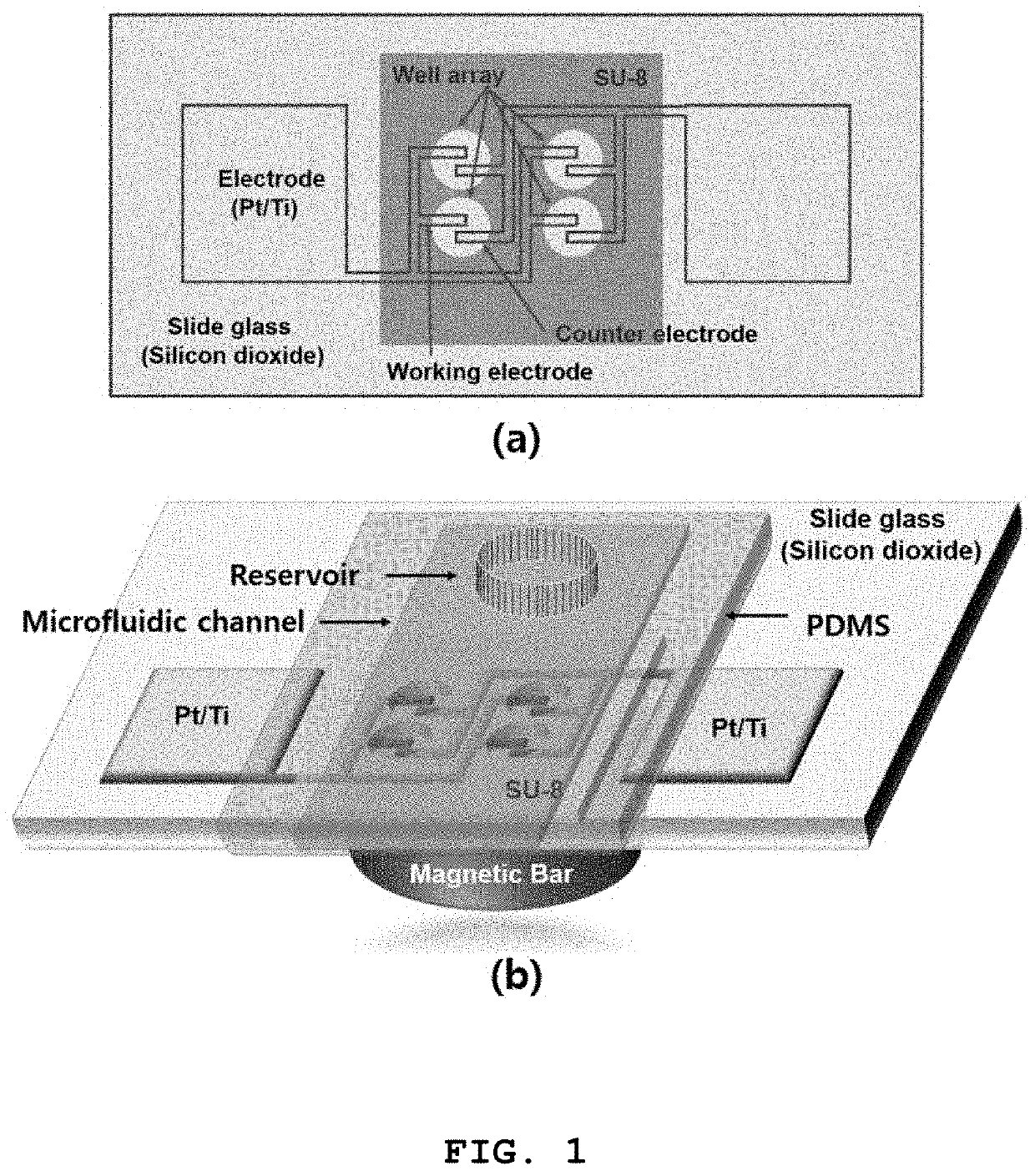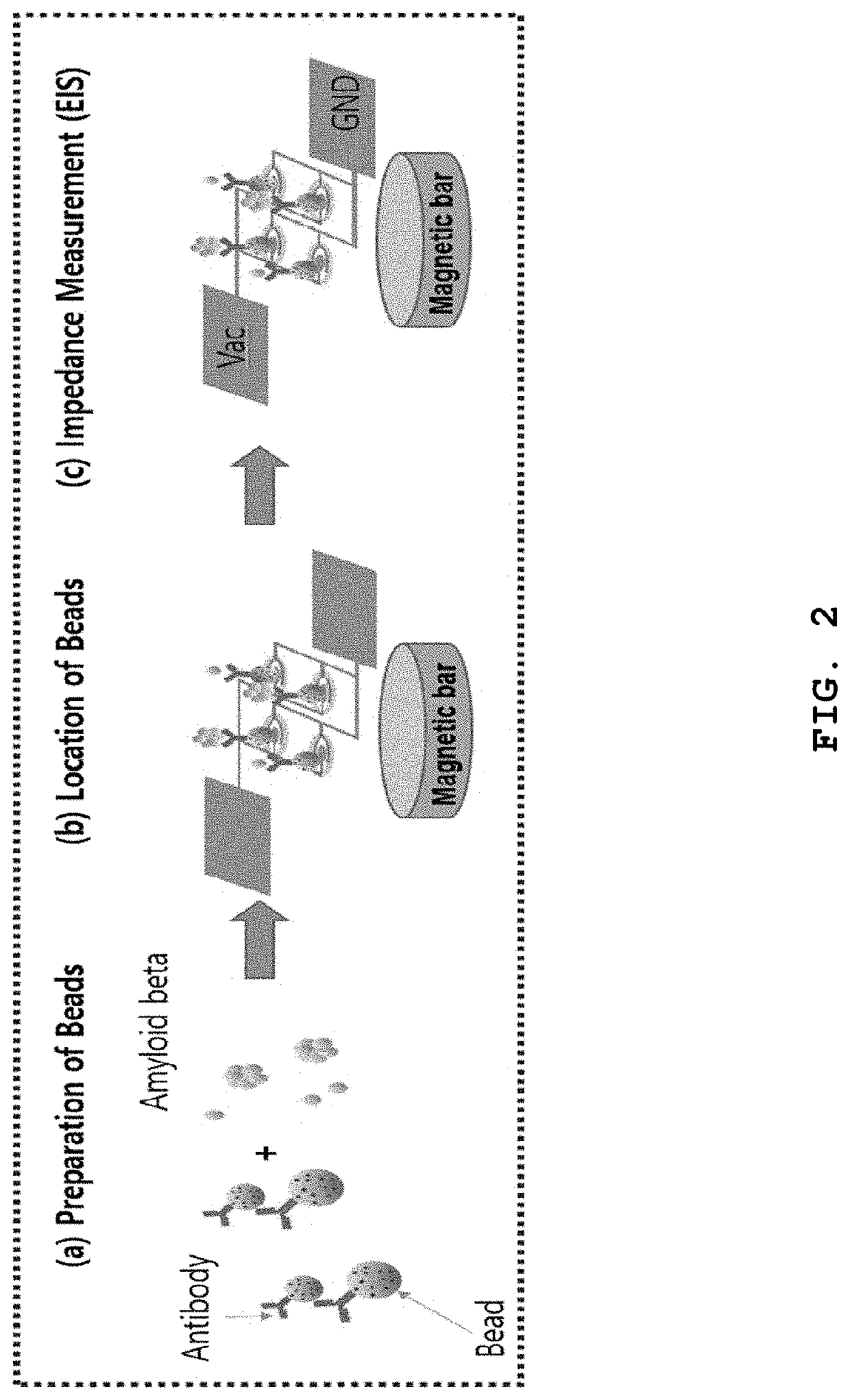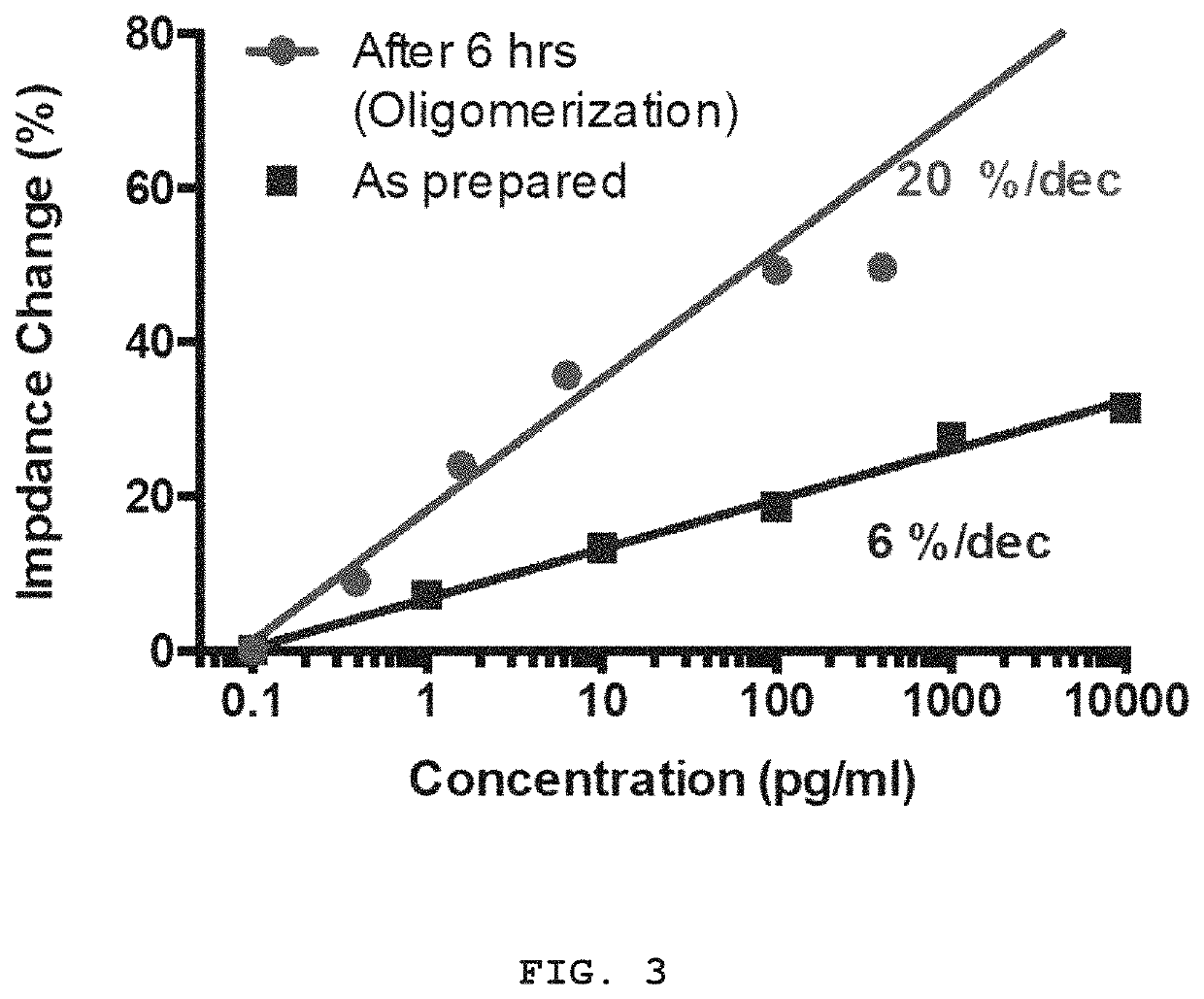Method for diagnosing diseases through oligomer analysis of abnormally aggregated proteins
a technology of abnormally aggregated proteins and oligomer analysis, which is applied in the direction of material analysis, material impedance, instruments, etc., can solve the problems and the inability to tell a patient from a normal person, so as to achieve the effect of reducing the accuracy and reliability of diagnosis
- Summary
- Abstract
- Description
- Claims
- Application Information
AI Technical Summary
Benefits of technology
Problems solved by technology
Method used
Image
Examples
Embodiment Construction
[0027]Hereinafter, a detailed description will be given as to the embodiment of the present invention with reference to the accompanying drawings.
[0028]FIG. 1 is a block diagram showing the construction of an impedance biosensor used in the embodiment of the present invention.
[0029]Referring to FIG. 1, the impedance biosensor may be comprised of an electrochemical impedance spectroscopy (EIS) sensor array (a) and a bead EIS (BEIS) platform (b). In the EIS sensor array (a), a working / counter electrode is formed of Pt / Ti metal and a microwell is made of an SU-8 electrode.
[0030]The working / counter electrode may form an array of 10*10 or 20*20 or more electrodes. Here, the microwell is to focus the electric field on the surface of magnetic beads arranged between the working / counter electrodes.
[0031]The BEIS platform (b) has a plurality of BEIS sensor arrays to form a PDMS microfluidic channel (optional), and a permanent magnet or an electromagnet arranged on the back surface of the BEIS...
PUM
| Property | Measurement | Unit |
|---|---|---|
| concentration | aaaaa | aaaaa |
| threshold point | aaaaa | aaaaa |
| threshold point | aaaaa | aaaaa |
Abstract
Description
Claims
Application Information
 Login to View More
Login to View More - R&D
- Intellectual Property
- Life Sciences
- Materials
- Tech Scout
- Unparalleled Data Quality
- Higher Quality Content
- 60% Fewer Hallucinations
Browse by: Latest US Patents, China's latest patents, Technical Efficacy Thesaurus, Application Domain, Technology Topic, Popular Technical Reports.
© 2025 PatSnap. All rights reserved.Legal|Privacy policy|Modern Slavery Act Transparency Statement|Sitemap|About US| Contact US: help@patsnap.com



